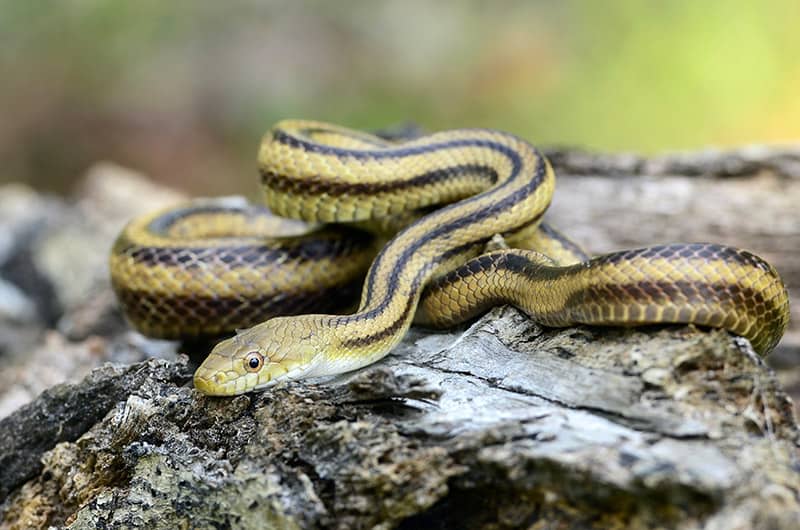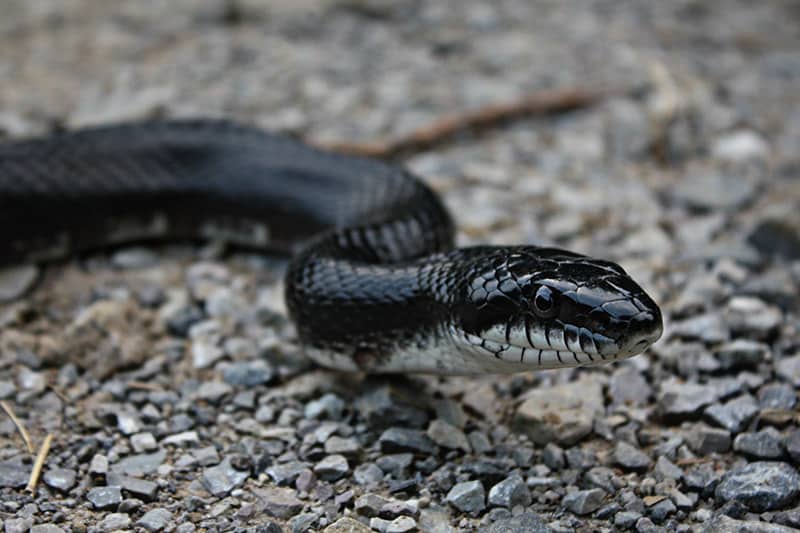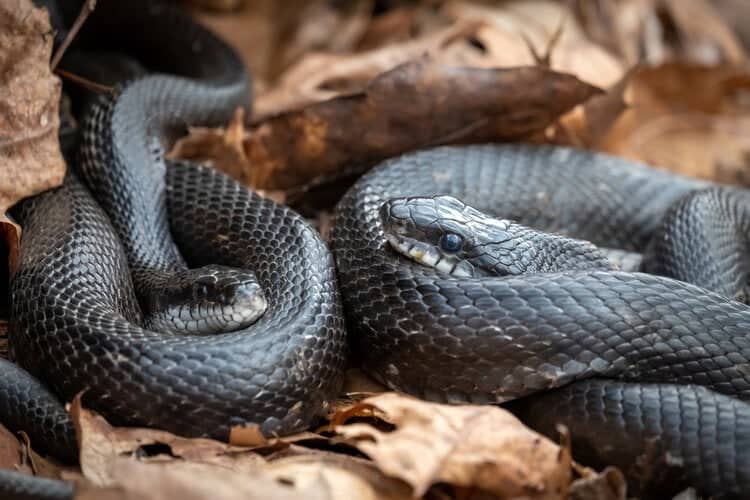The Ratsnake makes an excellent pet for the advanced beginner.
The rat snake will generally tame down in a short time to become very docile, even tempered, and tolerant of frequent handling. They can be a little more skittish than the kingsnake however, and their taming down may depend on a good environment and how you act toward them.
- For more information on keeping Snakes see: Guide to a Happy, Healthy Herptile
Scientific Classification
| Kingdom: | Animalia |
| Phylum: | Chordata |
| Class: | Reptilia |
| Order: | Squamata |
| Family: | Colubridae |
| Genus: | Elaphe |
| Species: | obsoleta |
Distribution
This type of rat snake is found throughout the United States. There are several subspecies of ratsnake, with the best known being the Texas rat snake, E. o. lindheimeri and the yellow rat snake, E. o. quadrivittata.
Description
The attractive rat snake will average about 4 1/2′ to 6 1/4 (1.4-1.9m) in length. Their coloration varies depending on the snake, with the texas rat snake being almost black with large buff to yellow reticulations and the yellow rat snake being yellow to olive yellow and having four lines running down the length of its body. There are many color variations in the subspecies. Their scales are lightly keeled.

Feeding
Ratsnakes are a constrictor and their diet consists of mice, rats, and other chicks. Feed once or twice a week, depending on the size of the food and the size of the snake. As you get to know your snake, you’ll learn what its feeding needs are. Fresh water in a shallow dish should always be available.
Environment
They do not eat other snakes, and so they can be housed alone or in groups with other snakes of similar size and habits.
You can set up their terrarium as a woodland type and provide moderate humidity. See the terrarium types described under Basic Reptile and Amphibian Care for more information. This snake needs a hiding place and a small water dish. It also likes to climb, so a vertical or semi-vertical tree limb with some plant vining is great.
Temperature and Lighting requirements
They do well at 75° to 85° F in the daytime and 65° to 72° F at night. Full spectrum lighting is important for your snakes well being and its long-term maintenance. You can use a substrate heating device for basic heating. For additional heat, you can add a full spectrum incandescent daytime bulb and a blacklight bulb or red incandescent bulb for nighttime heating. Be sure you use a thermometer so you don’t let the terrarium become overheated!
- For more detailed information see the Basic Reptile and Amphibian Care: Housing.
Breeding/Reproduction
These snakes, if not babies, need to be probe sexed for positive sex identification, and they are egg layers. They breed readily in captivity and are reproduced in many color variations.

Availability
Several varieties of rat snake are generally readily available as pets due successful captive breeding. Some available subspecies include the Black Rat Snake E. o. obsoleta, the Florida Rat Snake E. o. rossalleni, and the Grey Rat Snake E. o. spiloides, as well as many intergrades and color variations.
Featured Image Credit: samray, Shutterstock
